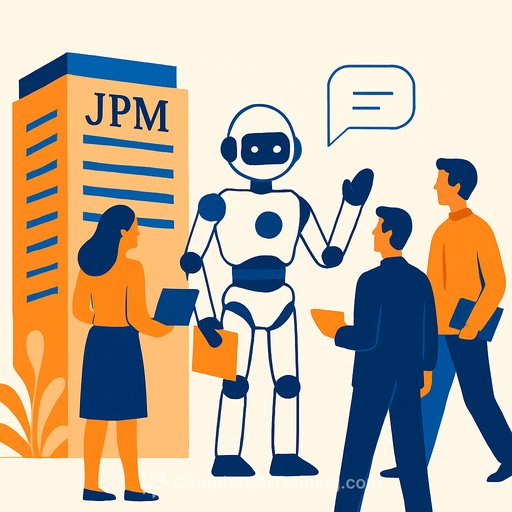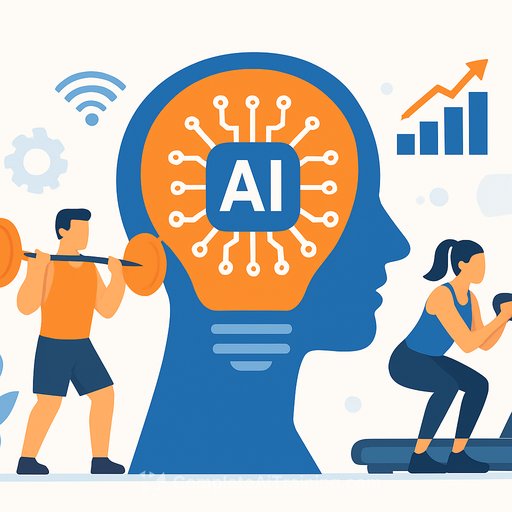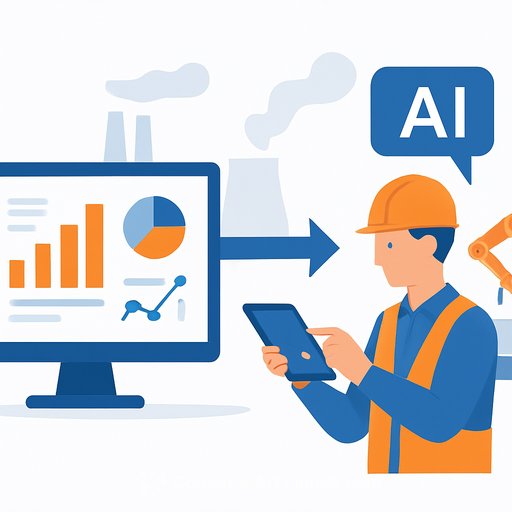Machine Learning: JPMorgan, OpenAI & Anthropic Evolving Banking Operations
Financial institutions are moving past chatbots and into AI agents that execute work end to end. JPMorgan is giving 250,000 employees access to LLM Suite, a platform that connects staff to models from OpenAI and Anthropic and updates every eight weeks with new data and workflows.
The goal, as Chief Analytics Officer Derek Waldron put it to CNBC, is a "fully AI-connected enterprise." That means assistants for every employee, automation across back-office processes, and AI support in client interactions.
What LLM Suite does today
- Creates complex investment banking decks in ~30 seconds (news, earnings, peer comps).
- Drafts confidential M&A memoranda for banker review.
- Provides a personal AI assistant to help with daily tasks for every employee.
- Automates routine back-office work to lift throughput and reduce cycle time.
- Runs multi-step agents that handle complex business tasks with minimal handoffs.
- Connects to proprietary data, internal databases, and software applications; about half of employees with access use it daily.
Why this matters for Operations
This is an operating model change, not a feature drop. Agents tie into systems, pull data, make decisions, and push outcomes across multiple applications without manual rework.
JPMorgan's eight-week update cadence shows how Ops can scale: standardize interfaces, package repeatable workflows, and ship improvements on a fixed train.
The integration reality
Enterprises run on thousands of applications. Waldron notes there's a gap between what models can do and what an enterprise can actually connect. The work is in data access, permissions, and wiring processes into a common AI layer.
That's why a central platform (like LLM Suite) matters: model selection, security, observability, and governance in one place, with reusable components teams can plug into.
Org design and workforce impact
AI was a central topic at Jamie Dimon's four-day executive retreat in July. The bank expects AI to shift roles: client-facing staff gain leverage; operations and support roles tied to routine processes contract.
Leaders have floated moving banker ratios from 6:1 juniors to 4:1. Consumer banking leadership projected at least a 10% reduction in operations roles over five years as automation scales.
Despite heavy investment industry-wide, an MIT report in July found most companies had yet to see returns on AI projects, even after more than US$30bn invested. JPMorgan expects the full integration work to take years, with an annual tech budget of US$18bn to back it.
Operations playbook: How to implement agentic AI
- Start with measurable, document-heavy processes: KYC refresh, dispute resolution, loan ops, reconciliations, RFP/RFI responses.
- Wire data first: identity, entitlements, and lineage on every dataset and system your agents will touch.
- Define guardrails: redaction, confidential handling, PII policies, and audit logs on every agent action.
- Keep a human in the loop for high-risk tasks; move to post-checks only after stability and quality targets are met.
- Ship on a fixed cadence (e.g., eight-week trains) with clear release notes, adoption goals, and rollback plans.
- Offer model choice (OpenAI, Anthropic) behind a single API; route by task type, cost, and accuracy.
- Instrument everything: latency, error rate, escalation rate, rework minutes, and realized time saved.
- Create reusable skills: retrieval over proprietary data, document drafting, reconciliation, exception handling, and workflow orchestration.
Controls and risk management
- Confidential data: retrieval gated by entitlements; zero data retention on third-party calls where possible.
- Quality: reference-citation checks, structured outputs, and unit tests for prompts and tools.
- Reliability: deterministic tool use, fallbacks across models, and timeouts with safe failure modes.
- Compliance: immutable logs, decision traces, and review queues for regulated outputs.
Metrics that matter
- Straight-through processing rate and exception rate per workflow.
- Cycle time per case and queue age distribution.
- Cost per transaction/task and model spend per outcome.
- First-pass accuracy, rework minutes, and audit findings.
- User adoption: weekly active users, tasks per user, and satisfaction.
90-day plan for Ops leaders
- Pick three processes with clear SLAs and heavy manual effort; baseline current metrics.
- Stand up a secure agent platform with model routing, data access, and logging.
- Ship two low-risk automations to production with a human in the loop.
- Publish a governance checklist and approval flow for new agent skills.
- Roll out training for managers and operators; set weekly adoption targets and publish progress.
What JPMorgan is signaling
- Every employee gets an assistant; every process gets an agent.
- Platform beats point solutions; integration beats demos.
- Release trains, not one-offs; quality and controls are non-negotiable.
- Expect role shifts: more client-facing impact, fewer routine back-office tasks.
Upskill your team
If you're building an AI-enabled operations function, curate training that maps to roles and processes, not generic theory.
- AI courses by job - pick tracks for operations, analysts, and managers.
- AI tools for finance - shortlist tools to pilot in controlled environments.
The direction is clear, even if timelines and outcomes vary. Treat agents as a new ops layer: instrumented, governed, and updated on a schedule that compounds value every cycle.
Your membership also unlocks:






